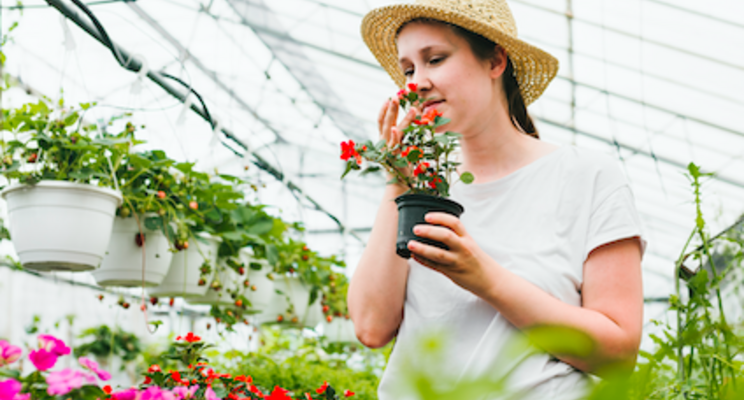How to build better begonias
Added on 28 October 2021

If you're growing begonia varieties in the greenhouse, there are several production best practices you should be aware of to ensure success with the crop. Plantpeddler's Mike Gooder went over his top tips during a session at AmericanHort's recent Finished Plant Conference.
"Stress management is the key with this plant. If you take home any message from this presentation, I'd want it to be to focus on stress management," Gooder told attendees.
Specifically, he said to reduce stress early in the plants' life cycle to get more vegetative growth initially, and then to induce stress to get them to flower.
"Once they leave your propagation area, no more [supplemental] lighting," he added. "And then you want to pull back on the stress as they finish up."
Gooder has also uncovered the ideal planting manner for begonias. He said that since begonias have a front and back, it is important to plant them back-to-back, and you should always turn young cuttings to all face one direction, backs together with two fingers worth of spacing between them when planting in trays.
On the subject of pinching, he was quite clear: Don't do it.
"No, you're going to add a whole bunch of time onto the production cycle [if you pinch], and you lose uniformity in flowering; you do not need to pinch," Gooder advised. "And if your begonias stretch, bury them. Don't fear planting them too deep — you'll get branching below the soil line and you want to have stability in the pot, and this will give it to you."
As far as climate conditions in the greenhouse, Gooder said you "can't cheat the heat" with begonias.
"Begonias need every bit of love — they want to feel warmth, be coddled, that sort of thing," he explained. "You want a soft environment with high humidity, and average temps in the 70s."
"The biggest problem I see is people that cheat the heat on this crop," Gooder added. "Once the outside temperature starts to dip, then you induce flowering. But run them in vegetative at at least 75-78 degrees F. You might even run them in the low 80s because it's a tropical plant. This is not to be grown with petunia in a 55-degree block."
Read more on Greenhouse Mamagement.
Photo created by freepik - www.freepik.com
Source: Greenhouse Management
More news















